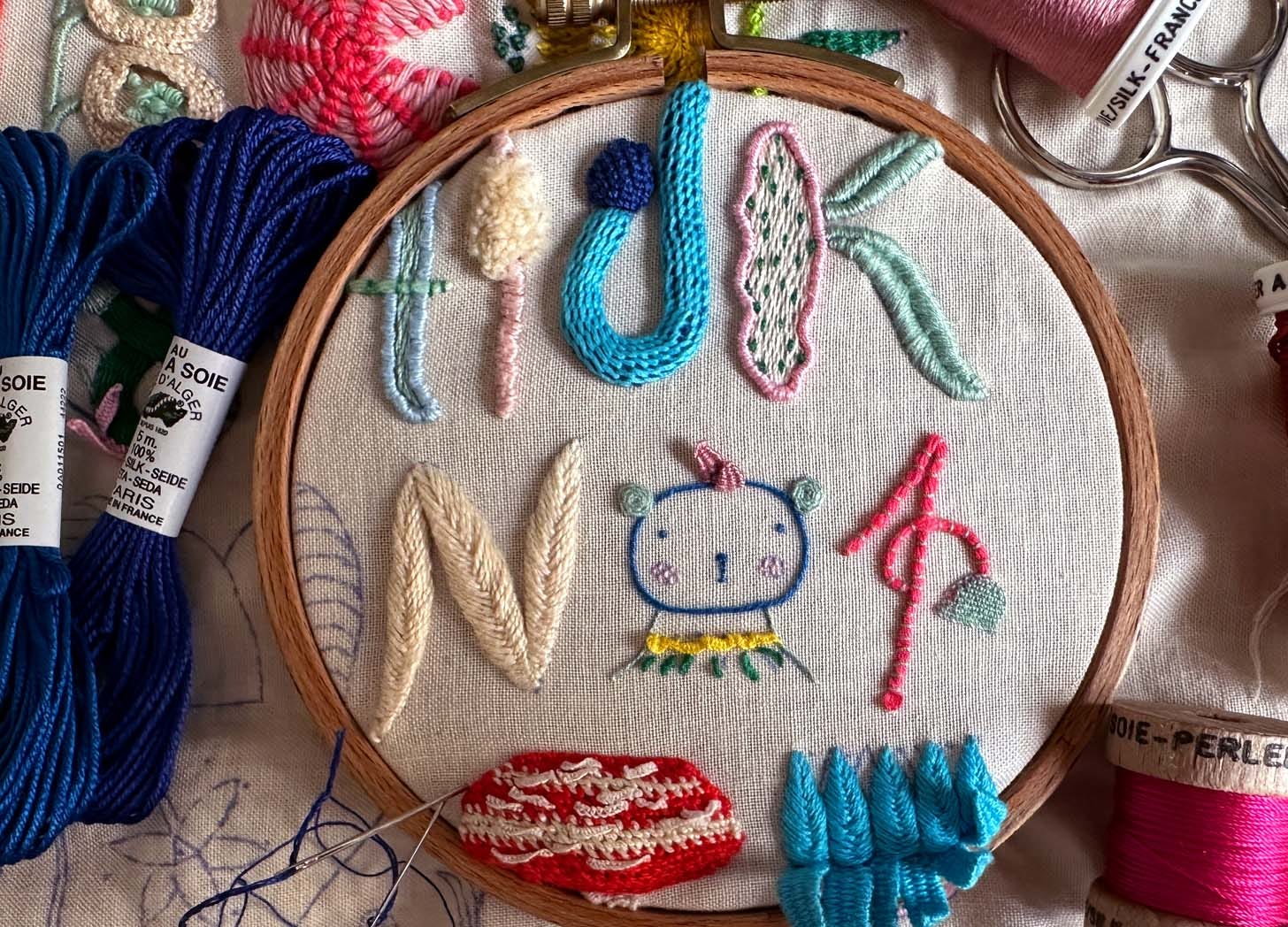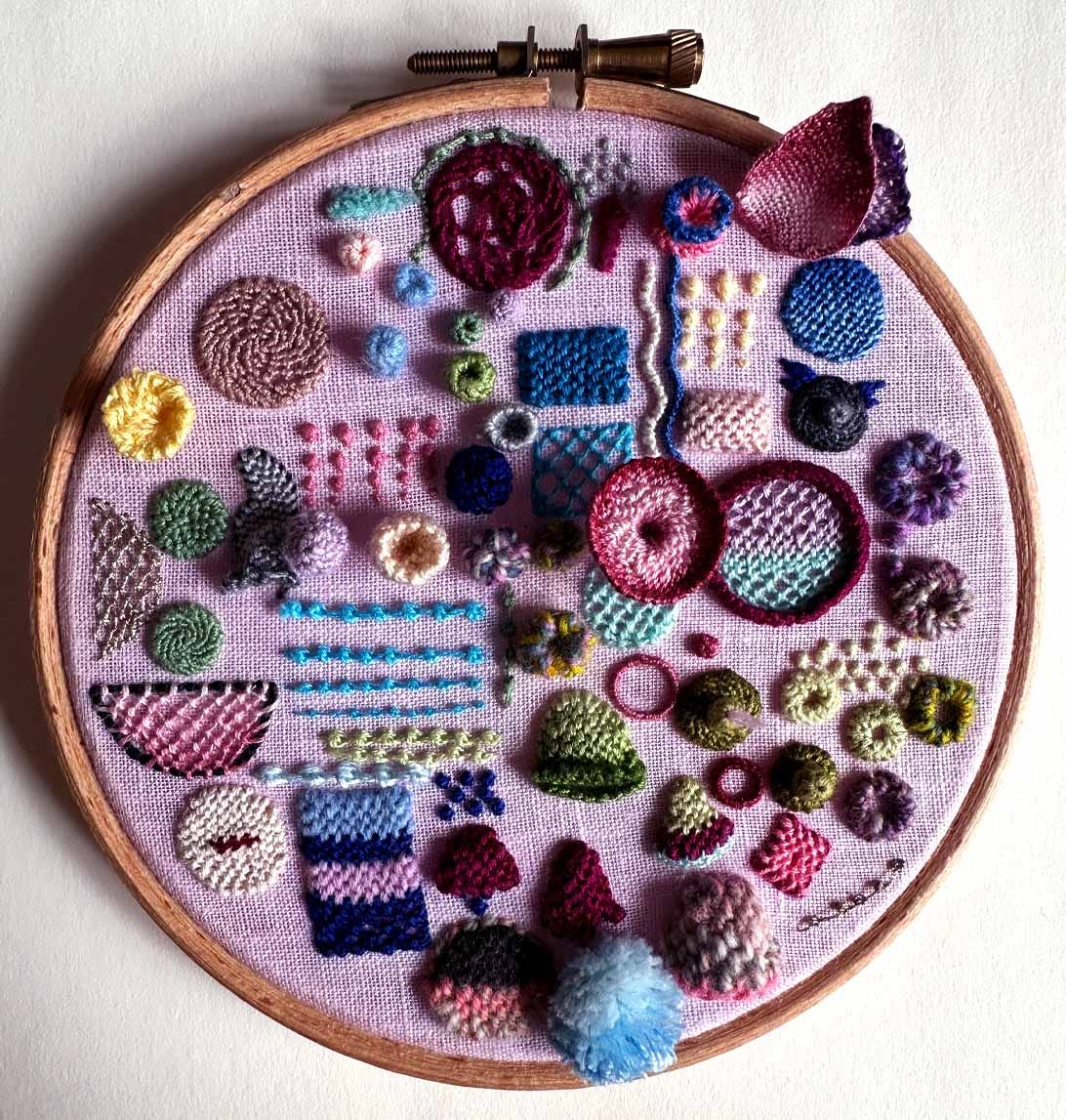Stepping Back in Time with Savoir Faire
From the desk of the artist Alana Clohessy, in a small corner of Paris, on the Left Bank of the Seine.
Friday, 25th July 2025. 25°C and Cloudy.
Tea in my Cup: Palais des Thés Green Tea with Cherry Blossom, no milk, no sugar.
My wish during the heatwave (you can read that letter here) for a rainy day, may have been granted too vehemently. It has rained all week. I am not complaining, I will take a cooler rainy day over the blazing sun every time but it is unusual to have this weather in July.
This week, I have been hand embroidering with silk. I had been hoarding these silk threads for several months now. Waiting for the right piece. Waiting and waiting. In every artist’s art practice, there are certain art materials or paints or notebooks, that stand apart from the rest. Usually they are expensive or very ornate. They feel special, cry out not to be wasted or ruined by your mark. To crack open the lid seems criminal. In the end they lay unused, never fulfilling their purpose. The artist too afraid to touch them, turn to draw on the back of envelopes or sew with fuzzy, cheap thread.
This happened to me with the silk thread. I am working on a sampler of stitches (a sampler is physical collection of hand embroidered stitches on material, allowing you to practice the stitch, see what the stitch looks like using different weight threads and once completed, acts as an encyclopaedia of stitches that you can refer back to). The stitches for the sampler were taught by Adriana Torres, an Argentinian embroidery artist, whom I took a workshop with in the Argentinian Embassy in Paris. One of the stitches for the sampler called for silk thread and so the spell of being too apprehensive to use the silk, was broken.

I bought the silk threads earlier this year. It was a magical afternoon. Once a month, Au Ver à Soie (To the Silkworm), a world famous Parisian silk thread manufacturer, established in 1820, open their doors to the public where you can peruse and buy their silk embroidery and sewing threads, among other sewing notions.
I walked into the building through the huge, wrought iron and glass doors. I am still in awe of the doors in Paris and the worlds that open up behind them. If you are ever in Paris, peek through an open door as someone walks in or out, it is not unusual to see whole courtyards and gardens where you think a small entrance should be. The hall was quintessentially French with marble walls, a large curving staircase and red carpet. I followed a sign for Au Ver à Soie, turned a corner and came upon a tiny elevator. I pulled the ornate cage door back and squeezed in. It rattled up one floor and there in front of me were the large wooden doors to Au Ver à Soie.
The company originally set up their premises at 235 rue Saint Denis in 1820. After the First World War, they moved to the current premises on 102 Rue de Réaumur, where it remains virtually unchanged to this day. I pushed open the double doors and stepped back in time.
Large windows faced me on the far wall overlooking the park. The floor, cabinets and displays were wood - that really beautiful, bronzed, lived in wood that has survived in Parisian apartments and Au Ver à Soie. There were women that smiled and greeted me as I walked in, a small group were sitting at a table embroidering together, others were buying and comparing the silk threads. The walls, displays and tables were laid with the multifaceted rainbow of silk. It was a small, intimate gathering of women who created.

These women knew their silk threads and the uses for them. There is an air to someone who intimately knows what they are talking about, no ambiguity or glossing over facts. These women were experts in their art and I soaked up every bit of information they could give me. “The Superfine thread that comes in 210 colours is used by Hermès to hem their silk scarves and is finer than regular sewing thread.” “The Gobelins thread is the first part of silk to come out of the cocoon.” “The Perle silk cannot be divided but the Algers can.”
They showed me pieces they had hand embroidered using the different threads, allowing me to compare the finish. One woman, shared with me her floral stumpwork pieces that were displayed under glass bell jars. I told her I have always wanted to do stumpwork and she encouraged me to start.
Walking in the footsteps of the designers from the Paris Haute Couture Houses, I wandered around the displays, to each type of thread, touching, admiring, coveting. I can see why Paris fashion have always come here to buy their silk threads. This is what the French mean by savoir faire. The direct translation of savoir faire is know how, but its true meaning is lost in translation. There is no word for it in English. It is knowledge learned and passed down from generation to generation, an honour to be bestowed on those that come after us. These women were steeped in it and anyone who walked in the door was bequeathed it. You are immediately taken under their wing and shown the magic of their world.
I bought one of each type of thread in hues of pink and a blue selection of Algers silk. I also bought a blue chenille thread, as it looked quirky. I said my goodbyes and skipped off with my shiny spools of silk into the sunny evening. I will be back.
If you are ever in Paris on the first Monday of the month (summer months vary) and have any interest in embroidery, sewing or want to see where the French couture houses still buy their thread, I would recommend visiting Au Ver à Soie. It is a treasure chest of silk, knowledge, memories and inspiration. Some places just have a vibe, the walls and wooden floors hold the memories of famous couturiers choosing silk threads for their new collections and conversing with friends. I am finally using this same silk and needless to say, I am hooked.
Au revoir - until we meet again,
Alana x



